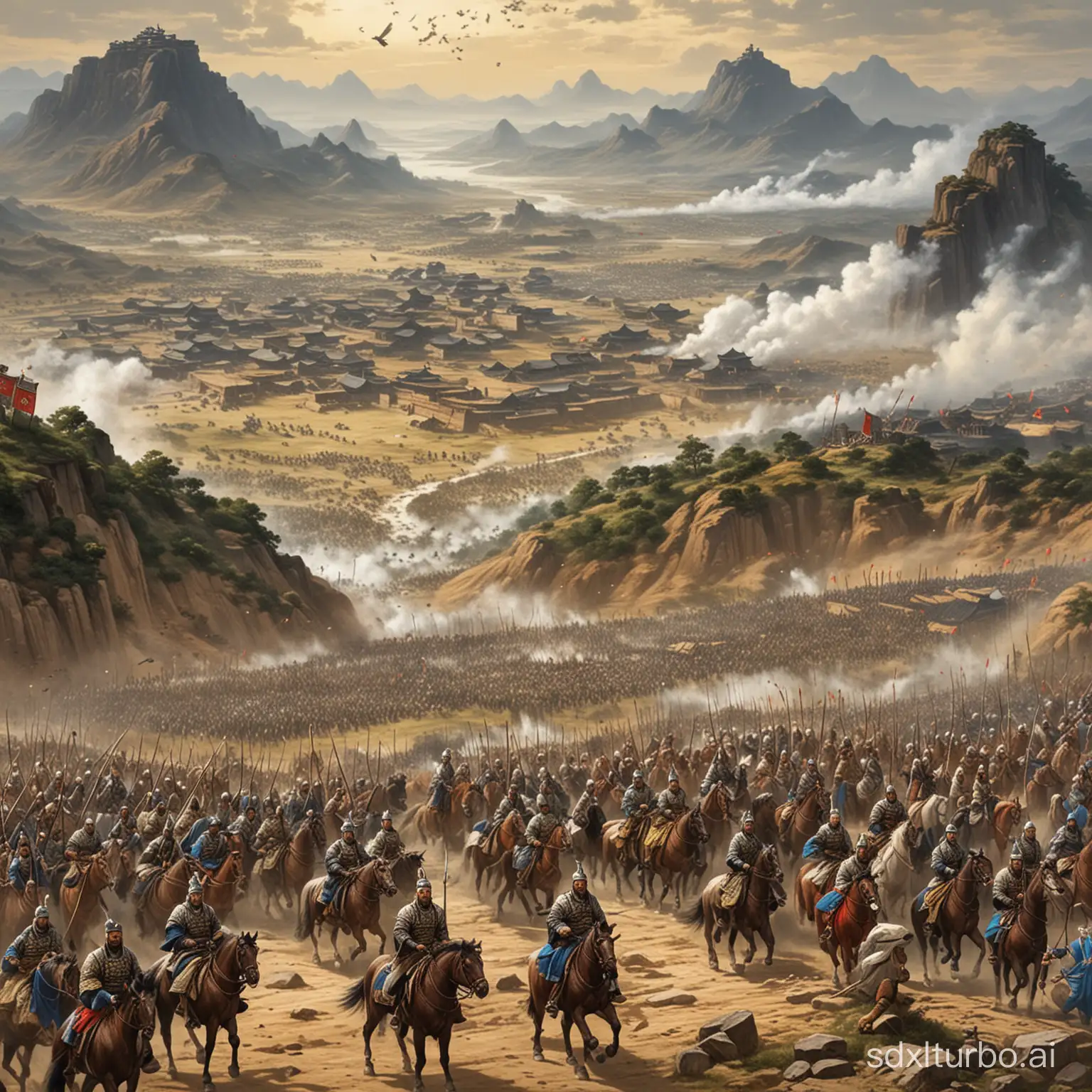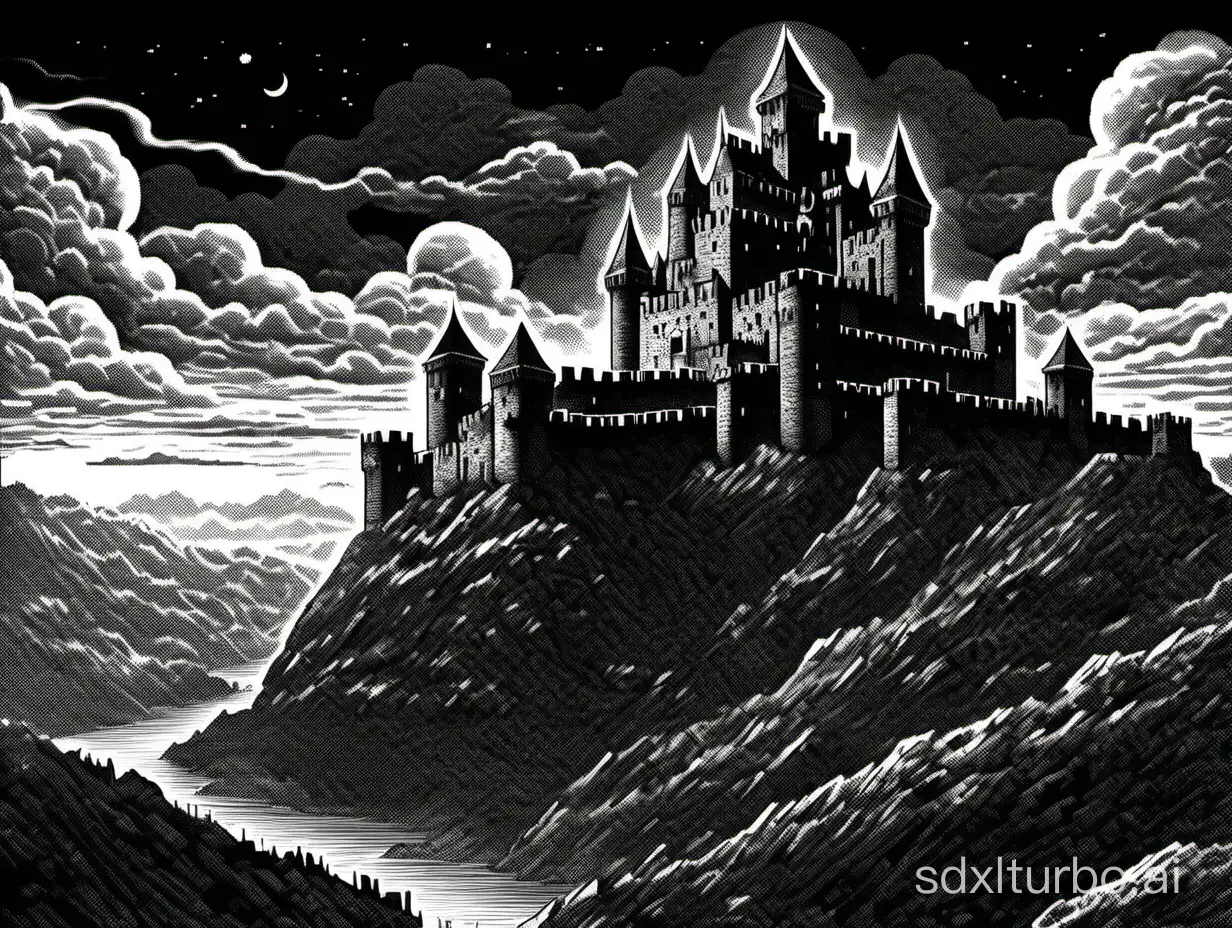Zhuge Liang Strategizing on Hilltop Amidst Arrow Rain

Image Prompt
Prompt
三国时期,诸葛亮防守街亭,诸葛亮坐在山头,运筹帷幄,防守方万箭齐发,魏军溃不成军
Choose Model: realistic
Aspect Ratio: 1:1
Generated by Stable Diffusion SDXL
Related AI Images

R



R


R

R

R
Related Tags
Prompt Analyze
- Subject: Zhuge Liang Strategizing Zhuge Liang, a renowned strategist during the Three Kingdoms period, is depicted in the scene, showcasing his intellect and foresight. He sits atop a hill, symbolizing his strategic advantage and high ground position, which is crucial in warfare. The posture implies deep contemplation and calculation, underscoring Zhuge Liang's reputation as a master tactician. Setting: Hilltop Defense of Jiaping The setting is on a hill, specifically Jiaping, during a time of conflict. The hill's elevation provides a vantage point for Zhuge Liang, allowing him to oversee the battlefield and plan his defensive strategies effectively. Jiaping's significance lies in its strategic location, making it a focal point of contention between rival factions. Background: Arrow Rain and Disarrayed Wei Army Arrows raining down from defenders emphasize the intensity of the battle and the peril faced by Zhuge Liang and his forces. The chaotic scene of the Wei army scattering in disarray adds to the tension and urgency of the situation. This background conveys the adversarial nature of warfare during the Three Kingdoms period and highlights Zhuge Liang's prowess in overcoming formidable challenges. Style/Coloring: Realistic Depiction with Dramatic Elements The image is depicted in a realistic style, capturing the historical authenticity of the Three Kingdoms period. However, dramatic elements such as the exaggerated arrow rain and the chaotic scattering of the Wei army enhance the visual impact and narrative intensity of the scene. The color palette may incorporate earthy tones to reflect the battlefield environment and evoke a sense of historical gravitas. Action: Strategizing and Planning The central action revolves around Zhuge Liang's strategizing and planning, which are core aspects of his character and historical legacy. His focused expression and gesturing hands convey his involvement in devising tactical maneuvers to outsmart the enemy. This action underscores Zhuge Liang's strategic brilliance and leadership amidst the chaos of battle. Items: Strategist's Tools and Battlefield Equipment Zhuge Liang is depicted with traditional strategist's tools such as maps, scrolls, and writing implements, symbolizing his analytical approach to warfare. Additionally, elements of battlefield equipment such as barricades, flags, and defensive structures may be included to contextualize the scene and convey the preparations made for the impending conflict. Costume/Appearance: Traditional Han Dynasty Attire Zhuge Liang is dressed in traditional Han Dynasty attire, consisting of a robe, headdress, and possibly a feather fan, reflecting his historical background and cultural identity. The attire also distinguishes Zhuge Liang as a figure of authority and intellect within the context of ancient Chinese society. Accessories: Symbolic Objects and Emblems Symbolic objects such as the feather fan, often associated with Zhuge Liang, may be included as accessories to denote his status as a wise and scholarly figure. Emblems or insignias representing Zhuge Liang's affiliation with the Shu Kingdom could further reinforce his allegiance and ideological stance amidst the tumultuous events of the Three Kingdoms period.